Etoile sardine network
The history of the “Etoile sardine” begins in 2019 with the exploration of other networks in the ceiling of the various rooms of the Berger. This new network located at the level of the great cascade of 27 m at -900 m is still being explored.
It is an earlier fossil network that is already over 3.5 km long.
With these latest discoveries, the total network exceeds 45 km of development.
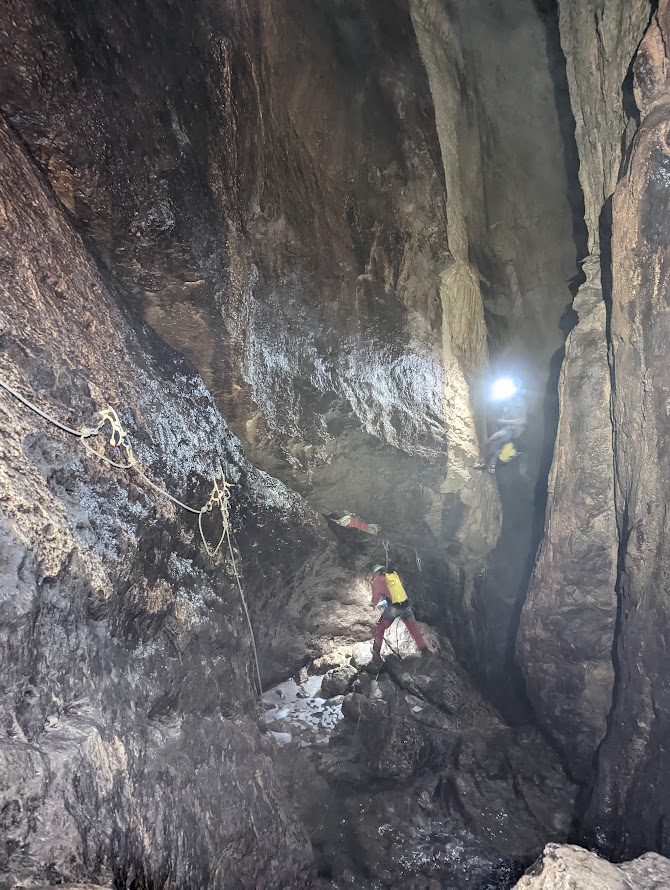
In February 2022, some fifteen cavers set off to continue the explorations initiated by Barnabé, on two outings lasting around fifty hours each (Thierry Guerin, Camille, Barnabe Fourgous, Tom Lallemand, Mateo Maquet, Olivier Galai, Thibaud, Prune Roche, Alexandre Faucheux, Patrice Roth, Damien Gruel, Jacques Morel, Eric and Gaël Fauroux, Barnabe Maurice). They will discover a secondary network in the Berger area on a huge scale.
Towards the Grande Cascade, an ascending rope leads to the new network.
The journey, which lasts about 1 hour, takes you through beautifully decorated galleries full of fistulas.
Here, they form 3 groups to search the various galleries and redo the topographies. Some go down several shafts (70 m in all).
This leads to a junction, a passage, a narrow passage that loops in all directions and yields nothing.
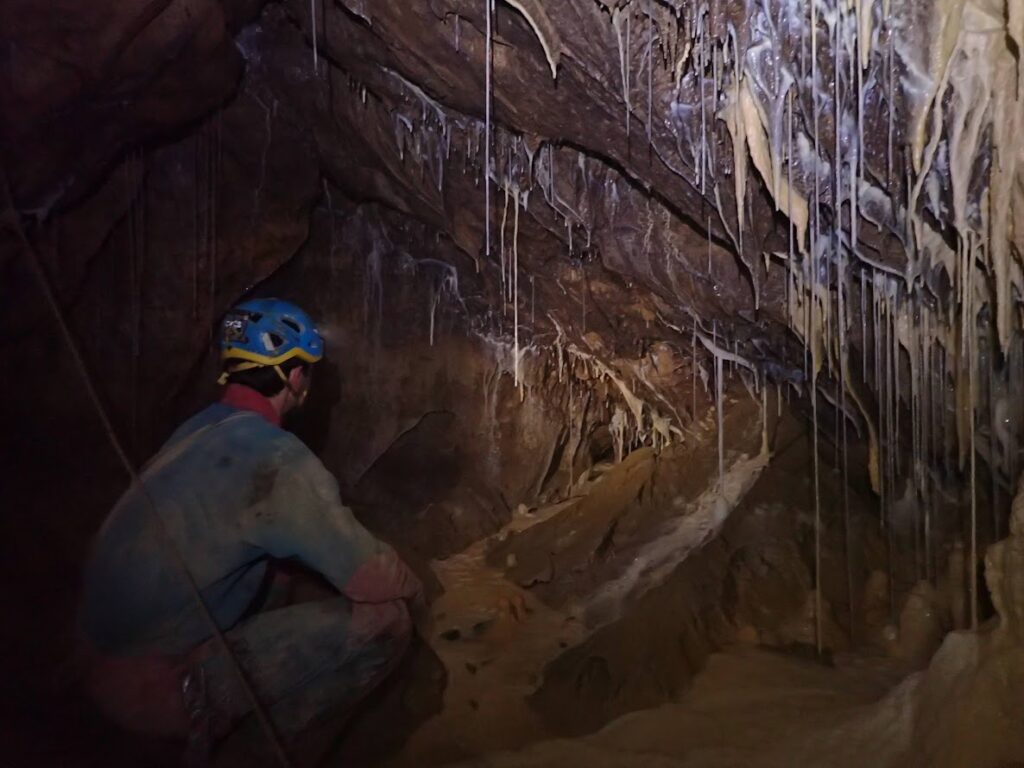
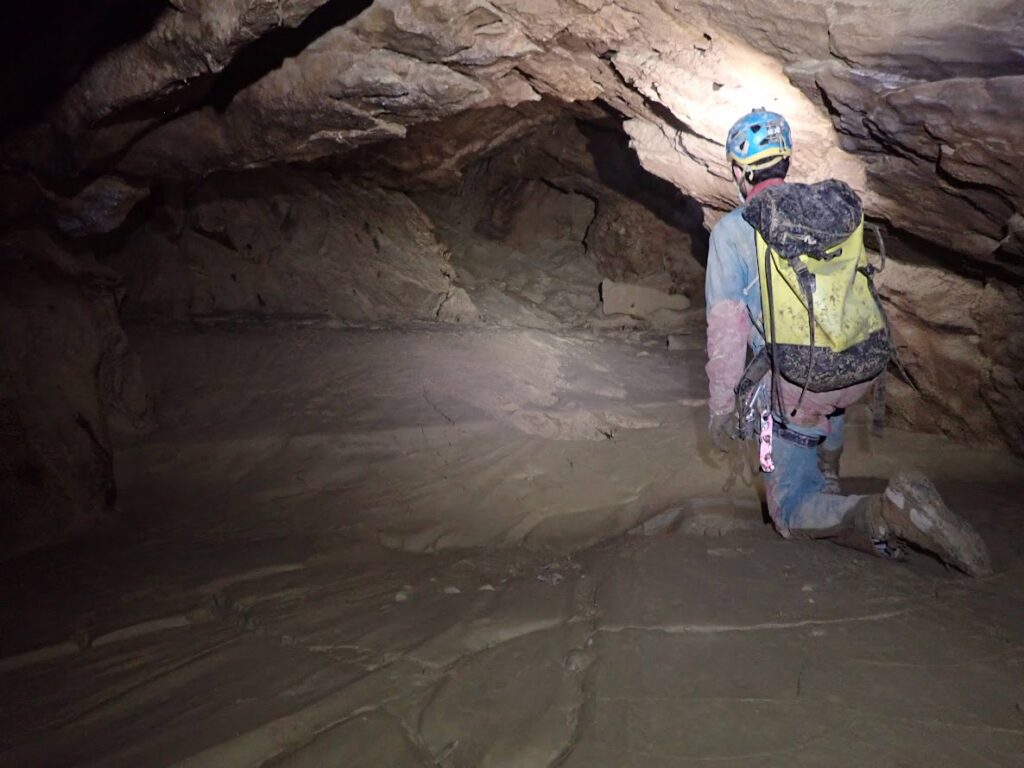
After a climb, the others find a magnificent fossil river. It’s a big first, and everyone pulls together to discover it (team spirit!). After a shunt to the side, they come across an easier route to the river.
It’s a river of gold! Magical, the ground is all yellow, covered with a stalagmitic floor and strewn with sparkling crystals. They hesitate to set foot in this marvel, but according to Thierry, “the best firsts are the ones that crunch under your boots”! This part of the river is at least 200m long.
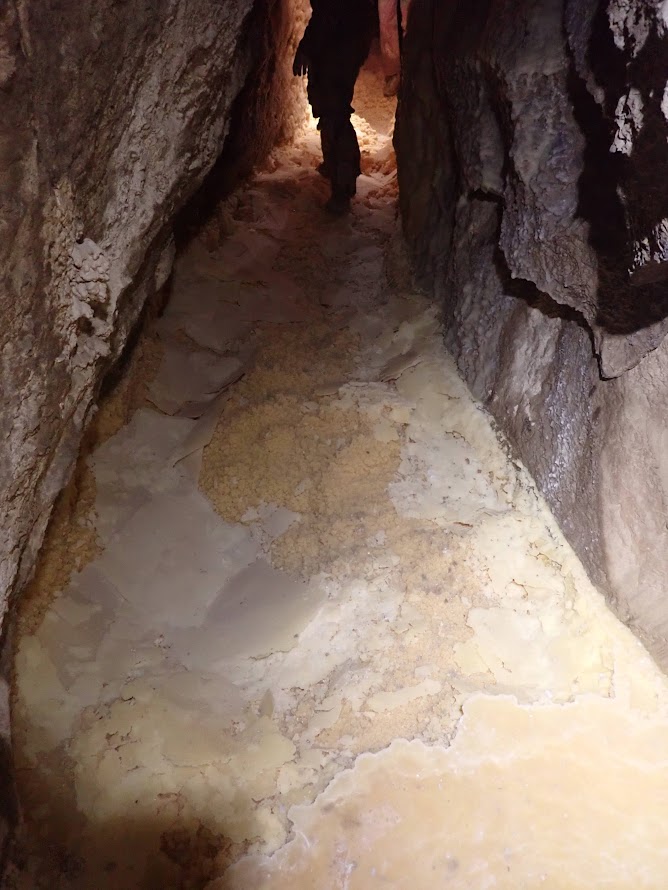
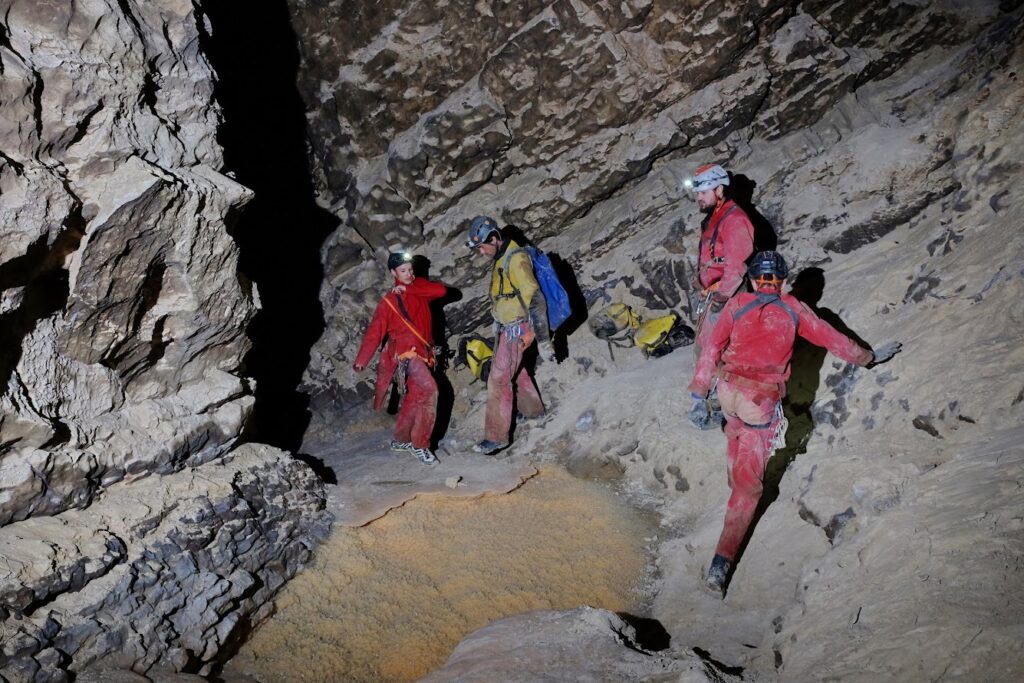
he gallery is about 5m in diameter, and they run through it. A bend, and the way down is blocked! There’s a rise on the left, and it’s still going strong!
It climbs steeply, and they place a rope to secure it … it goes on … and on … and on … they arrive at a shaft, where we see a lake and hear the water flowing. The lake is about 100m long and 5m wide. We’ll have to make a turn to wait for its end.
They stop because they’ve run out of material. They will have covered about 800m in this large gallery.
Another outing is scheduled for June with the same participants.
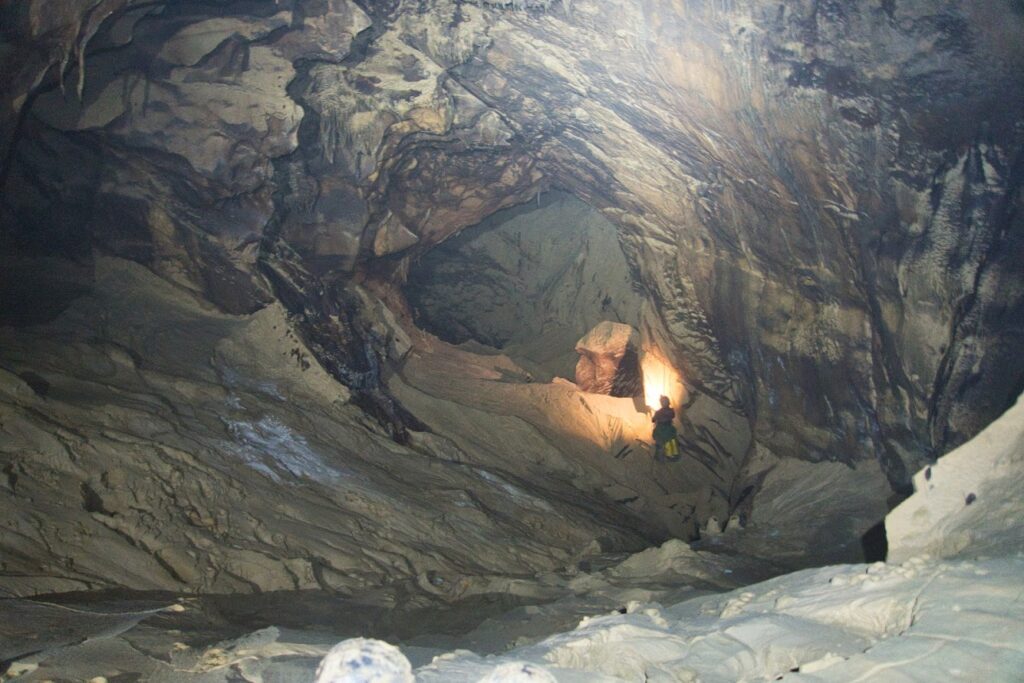
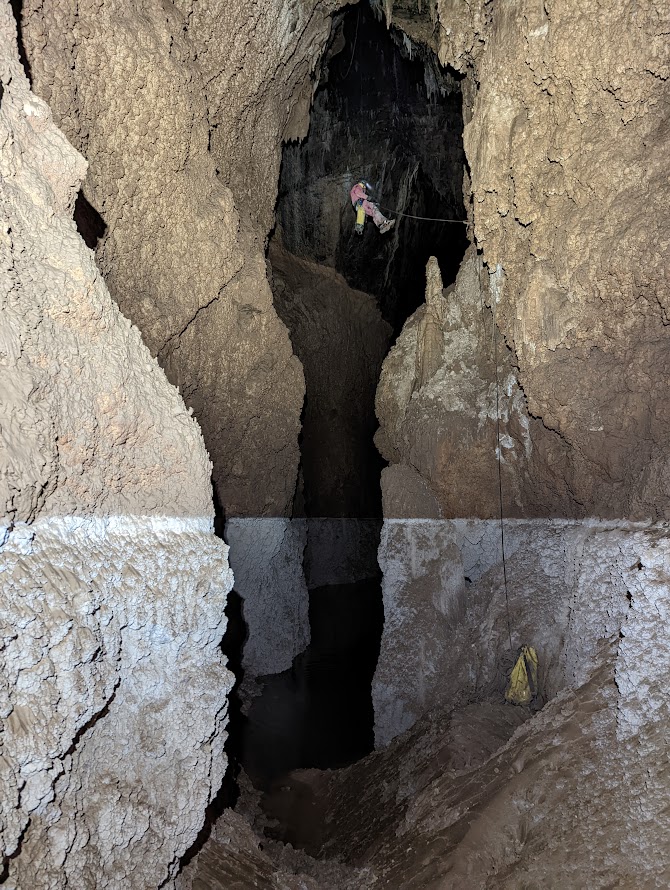
In June, they’ll be fine-tuning the equipment used on the first outing and starting on the equipment needed to cross the lake.
To cross the lake, Bab took his waterproof suit and got into the water. From the bottom, he pulls on the rope and helps Tom make crazy pendulums in the ceilings to get across to the other side. Not easy, as it’s very muddy!
Since our last visit, the lake level has dropped by 5 metres. Last time, the white trace was not visible.
Behind it, it flows into a small basin with a waste. It’s a good thing it’s low and not full of water, because it’s really muddy.
Thierry and Bab climb through the liquid mud, but fortunately there’s a good mooring at the top!
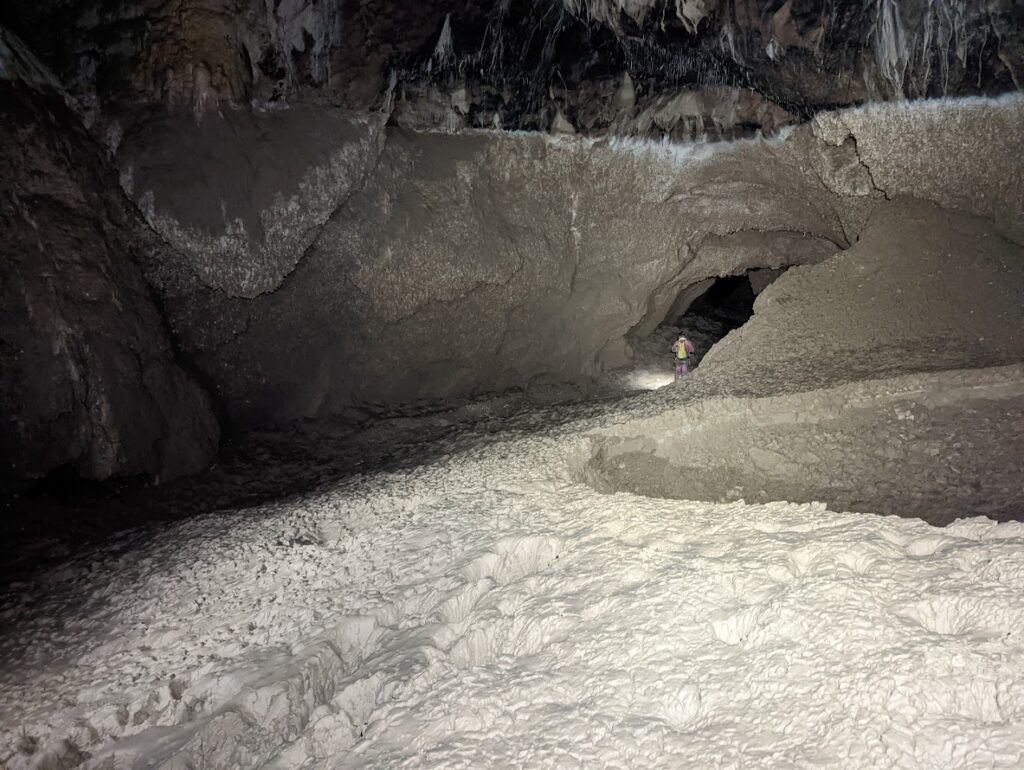
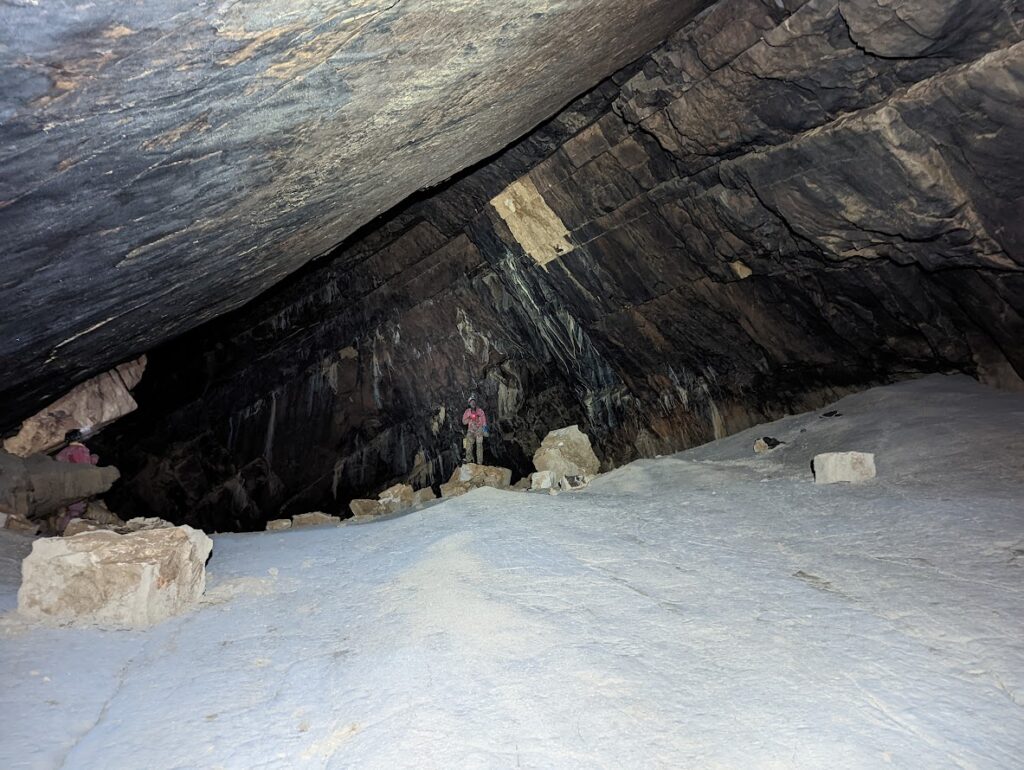
Behind it, the hall is really huge, with several departures. They leave a large departure high up to follow the easy galleries.
The first gallery we visit quickly ends at an old siphon. A passage leads to a room with no continuation.
The 2nd gallery reaches the top of a large slide. They throw a stone… the fall seems endless.
They need a long rope, even two. Thierry sets off with a drill in hand, equipping himself for a safe descent.
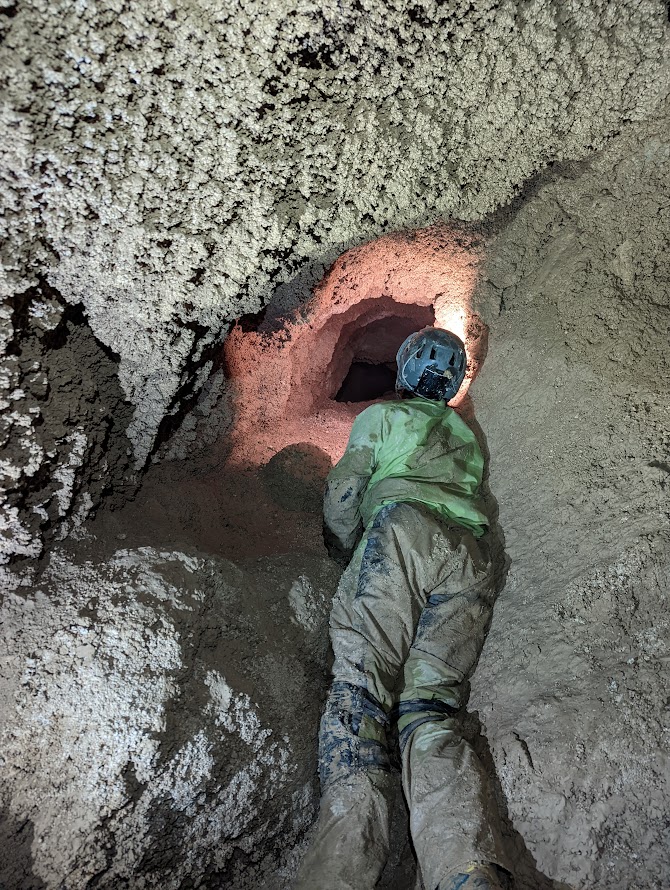
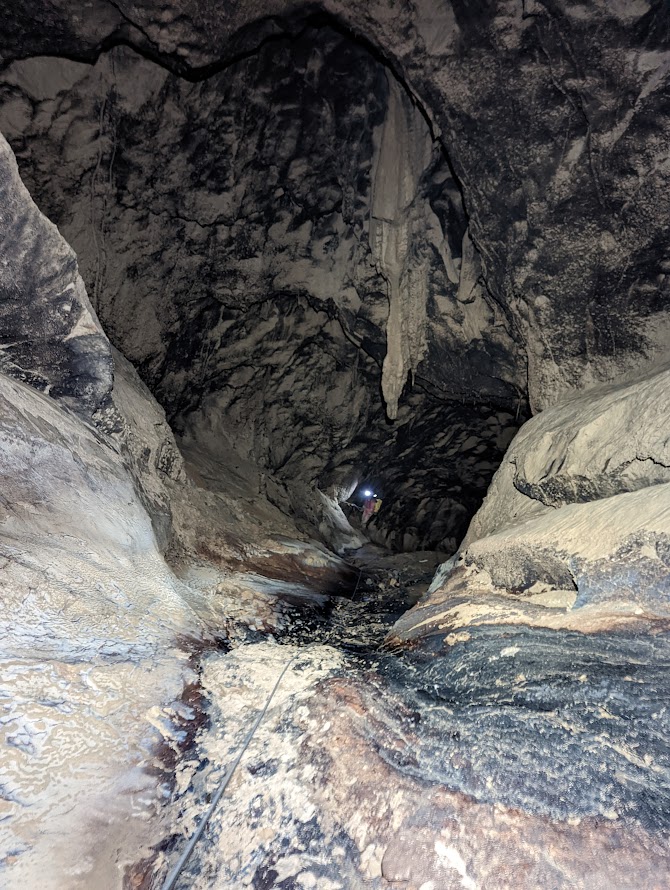
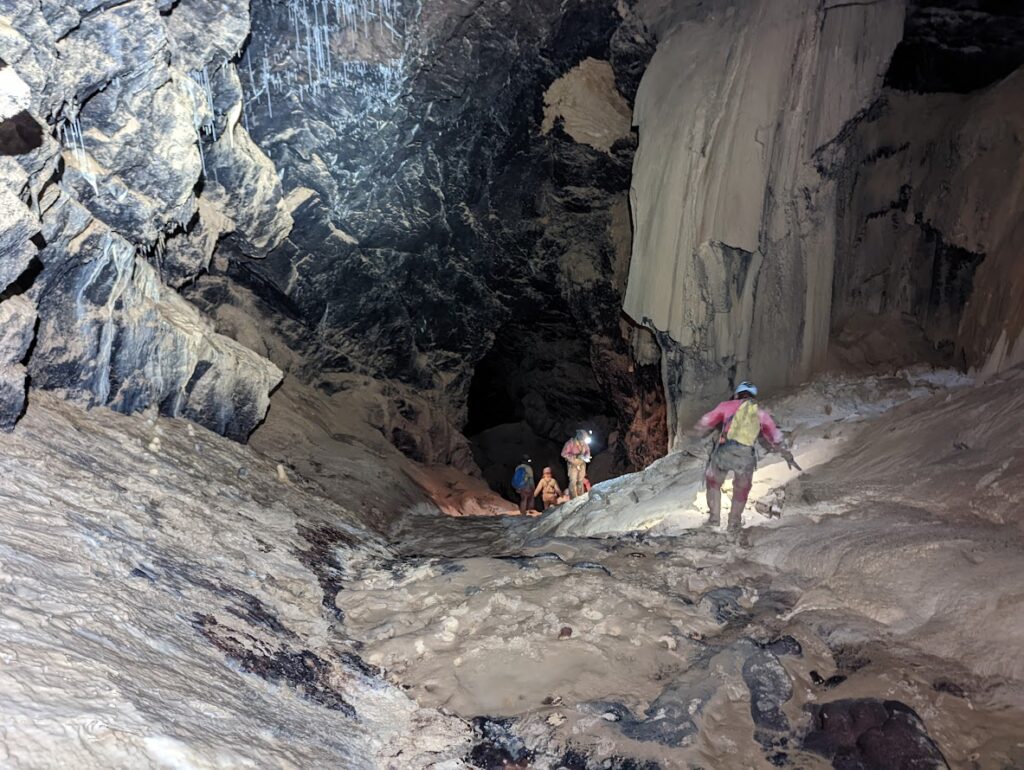
Down below, it goes on, it’s madness!
We feel so small compared to the power of nature, the power of the water that sculpted all this.
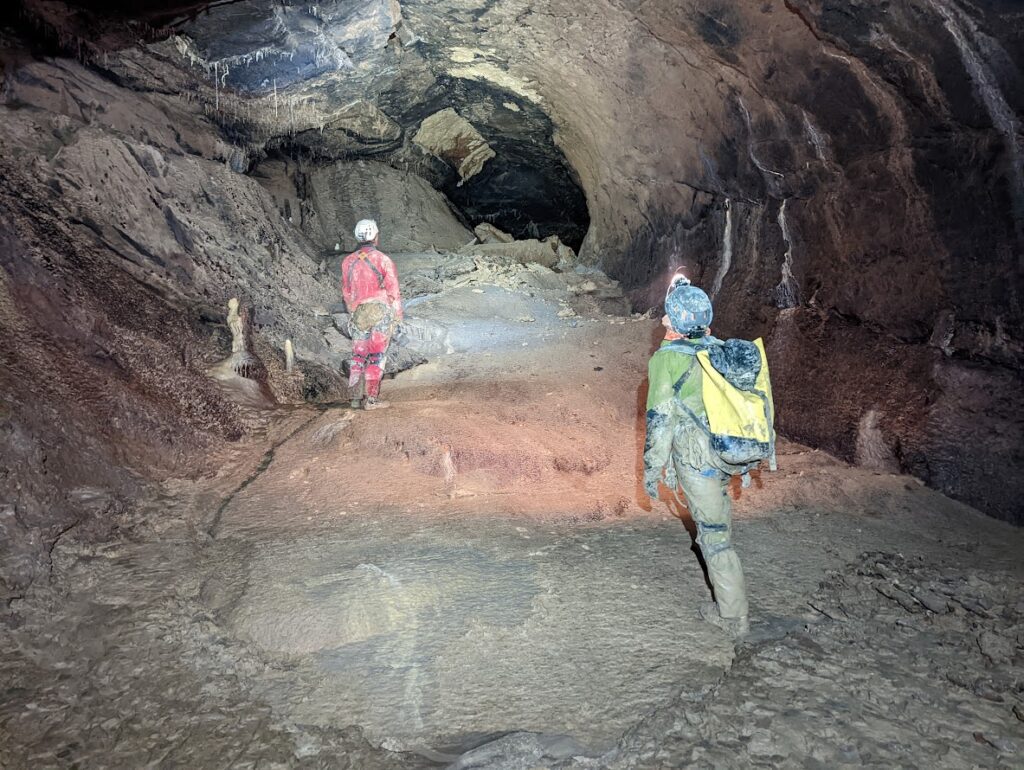
They go up a slope, and at the top they need a rope to go down a slide … but they’ve got nothing left! Argh!
They don’t want to stop there! Camille scratches in the river below and decides to go into the water. Won, it joins up on the other side, at the bottom of the slide.
The others follow … further on, there’s a climb, and you have to come back with a rope!
Never mind, they came back on 14 July 2022 and went over the climb. They found a (dry) tributary network in a huge fault that runs upwards. They are stopped under a hopper of large blocks
… the rest is for another time!
The final siphon of this network, located at the foot of the climb, is at – 1040 m, making it a new branch beyond – 1000 m.
The discoveries are far from complete.
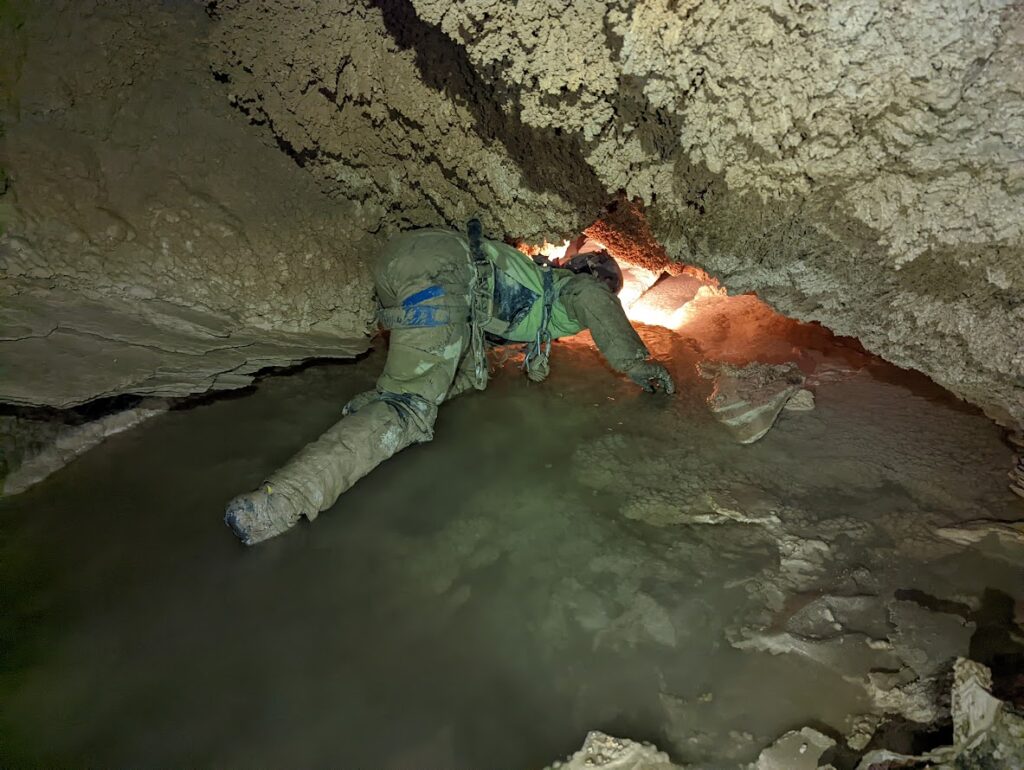
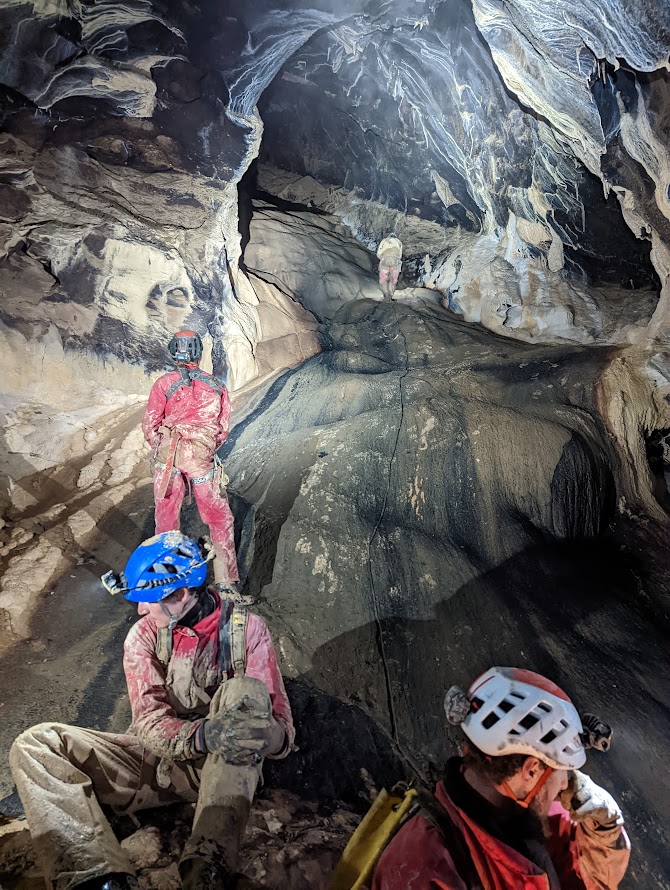
Photos : Patrice Roth, Alain Maurice
